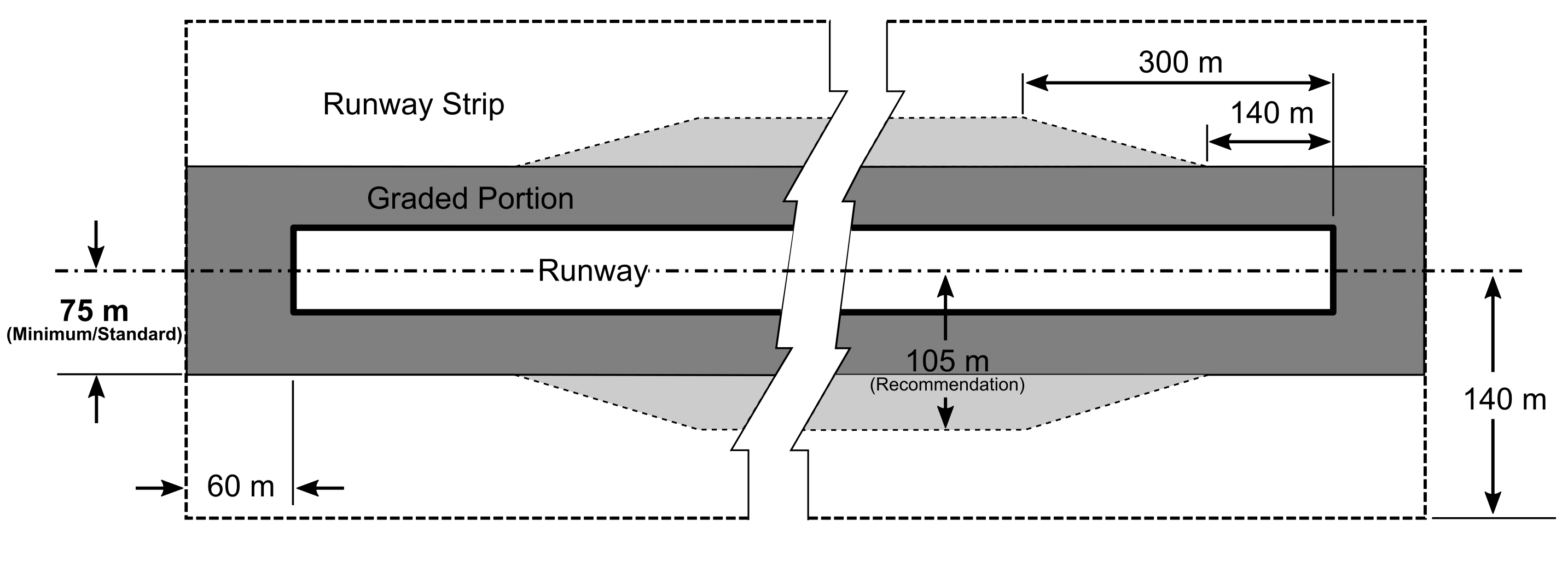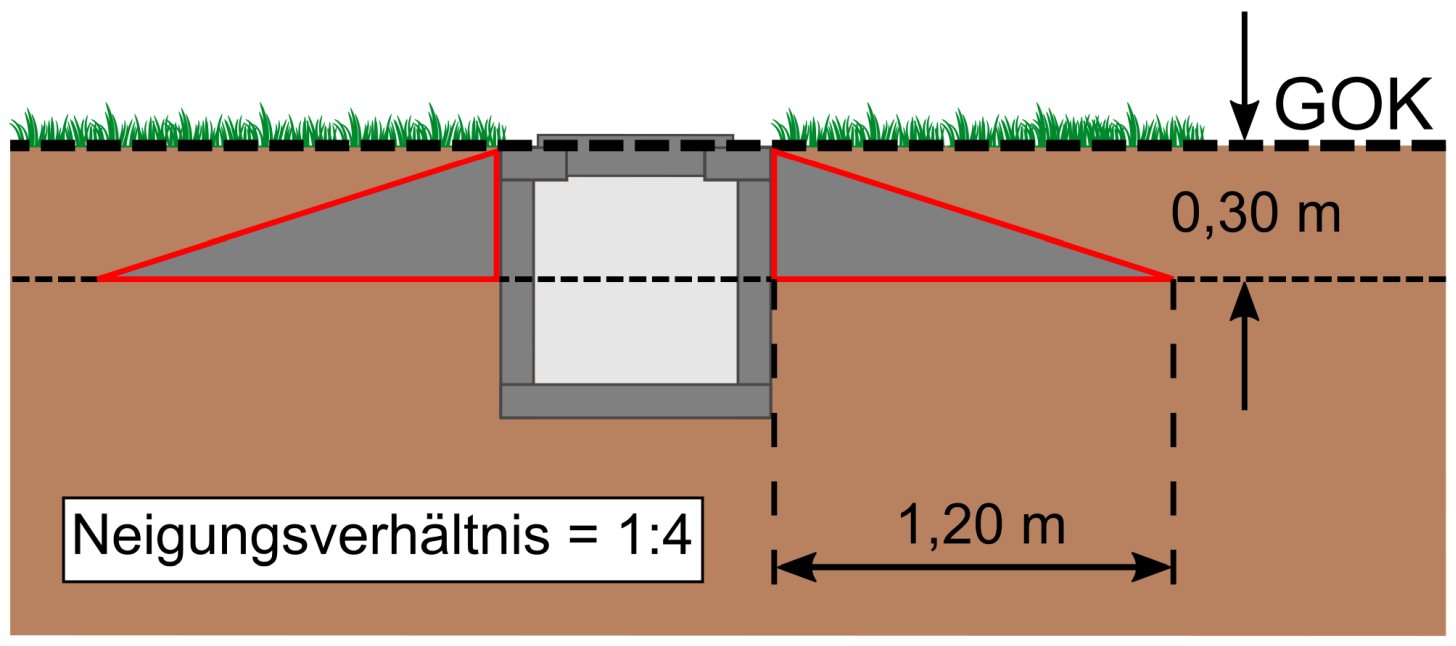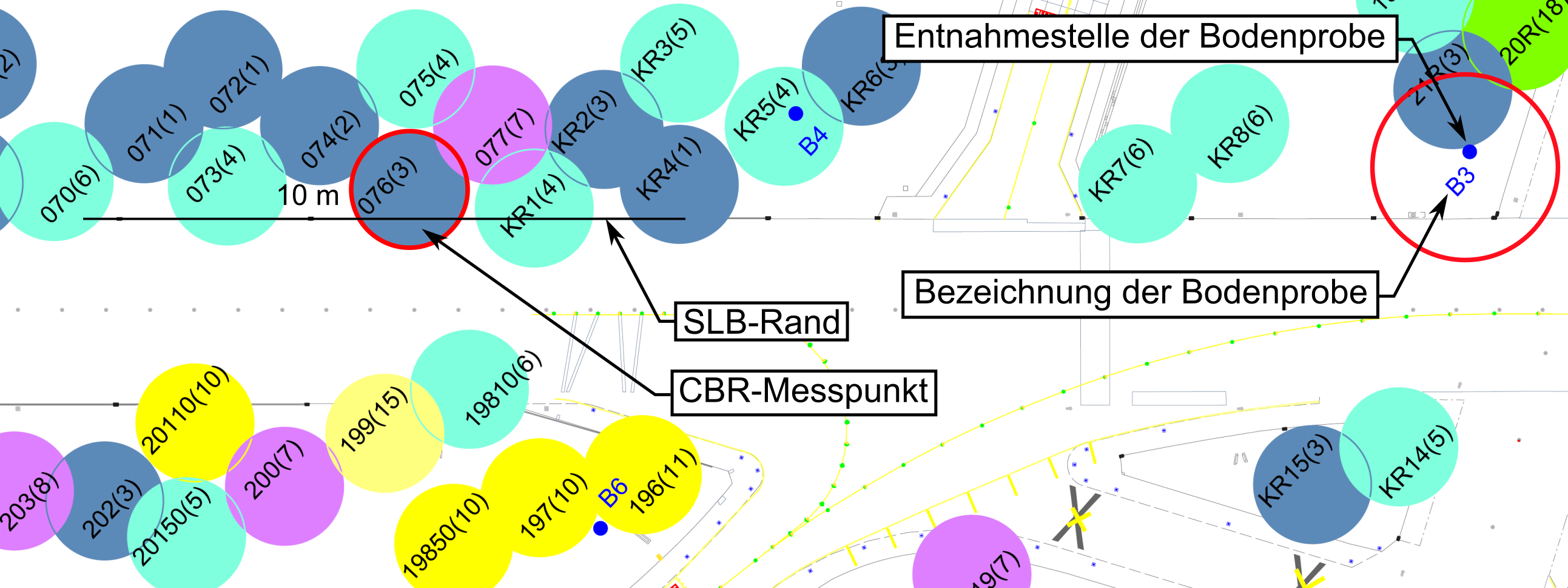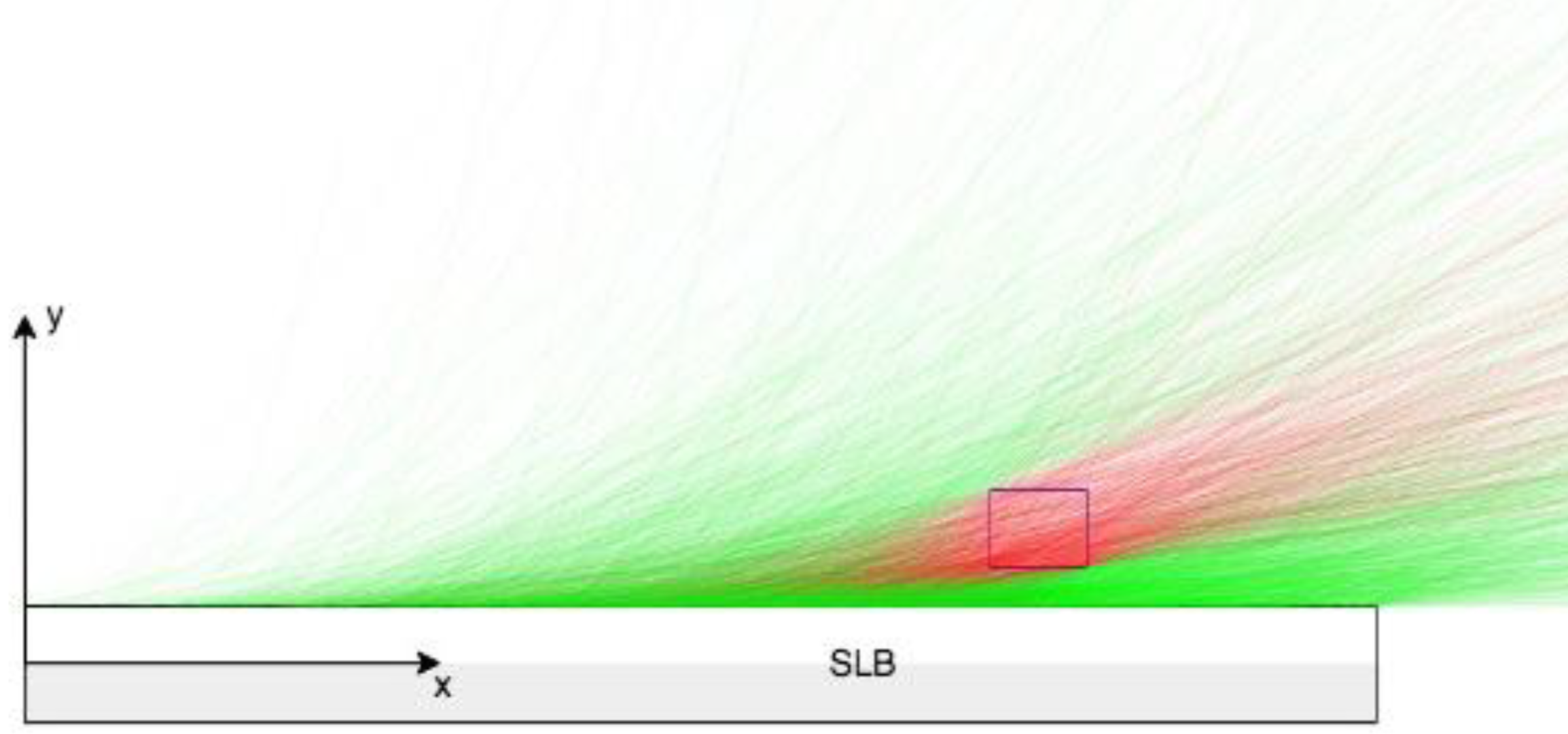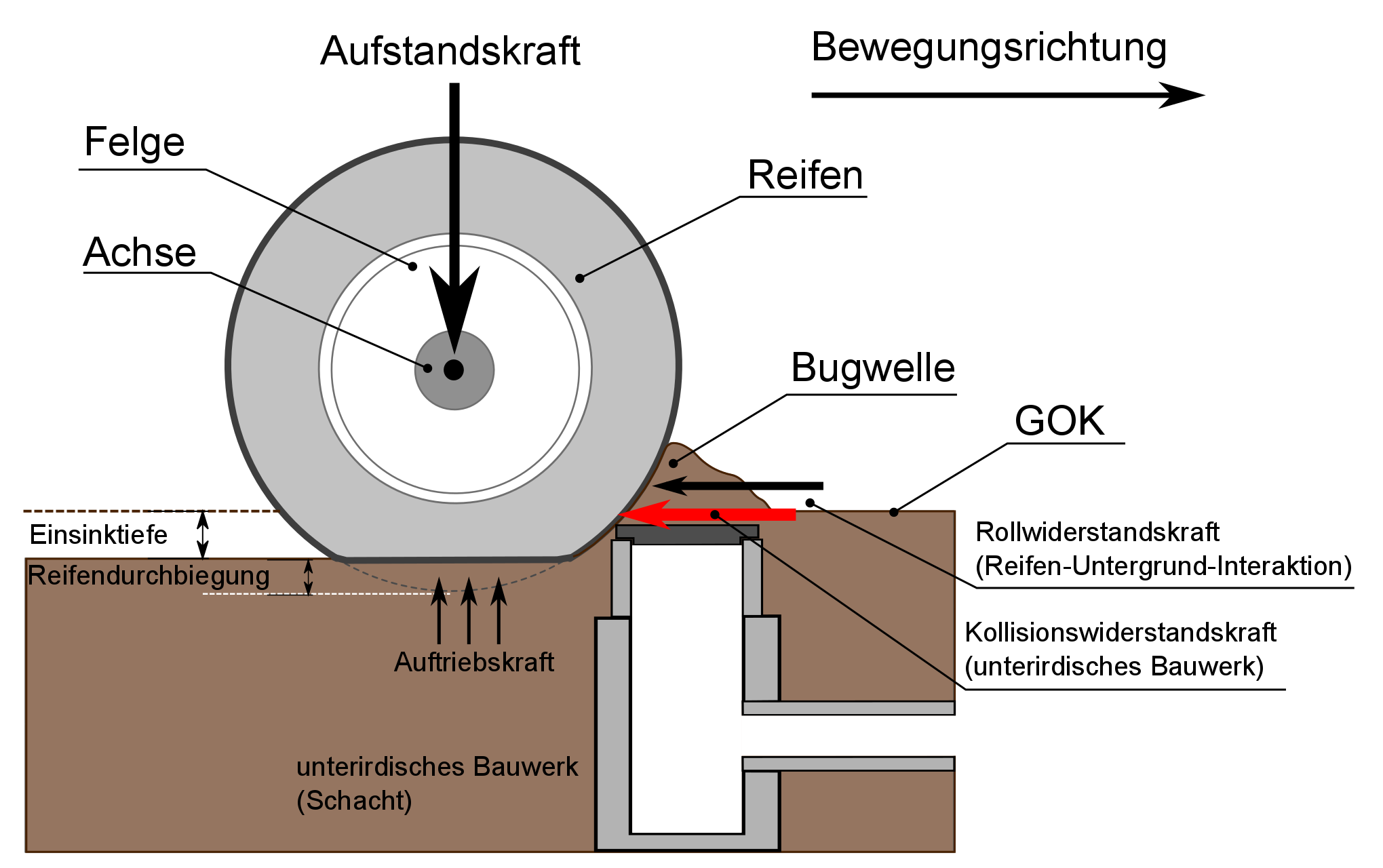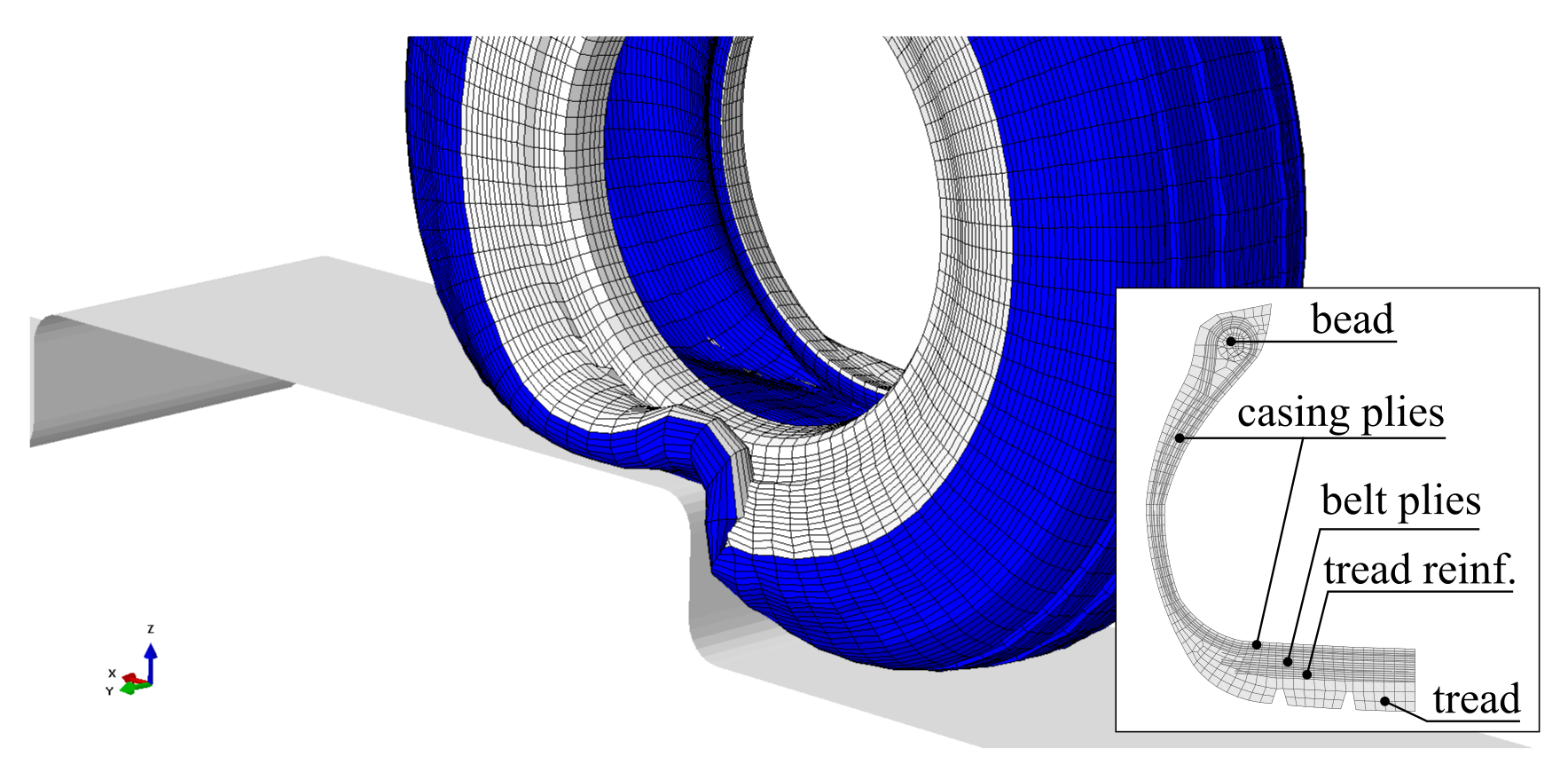The EASA guideline CS-ADR-DSN contains inter alia requirements for the design of RWY strips. One of the main safety objectives of the RWY strip is to minimize damage to aircraft (especially nose landing gear) leaving the RWY laterally in the event of an incident (so-called veer off). In this respect, the following requirements are to be implemented in the RWY’s graded portion:
- Sufficient bearing strength by establishing a so-called CBR value (California Bearing Ratio, test method for determining the soil bearing strength) of 15 to 20 from a soil depth of 15 cm and
- Removal of vertical surfaces of underground obstacles (e.g. power supply, control and drainage shafts as well as foundations, bases, etc. of lights, signs and other technical equipment).
If there are deviations from the guidelines with regard to these characteristics, EASA allows the demonstration of an equivalent level of safety (ELOS) and thus, if necessary, safe and regular flight operations on the basis of a detailed safety assessment.
The safety assessments carried out by GfL in this context essentially comprise the following process steps based on the Safety Assessment Methodology (SAM) of EUROCONTROL:
Analysis of status quo:
- Acquisition of general flight operation information (e.g. dimensions of relevant movement areas, traffic mix etc.), inter alia to determine reference aircraft
- Analysis and evaluation of CBR values and soil properties (including soil type and dry density) in the graded portion as essential parameters for determining rolling resistance forces within the framework of risk analysis; GfL can subcontract the recording of measurement and drilling data to a subcontractor (soil expert)
- Recording of the location, type and dimensions of underground obstacles in the graded portion
- Final assignment of the CBR values to the underground obstacles to determine the bearing strength in the immediate vicinity of the respective obstacle
Hazard analysis:
- Preliminary examination for risk assessment with regard to hazards for persons on board the aircraft and for the structure of the aircraft itself due to a veer off from the RWY and subsequent collision with an underground obstacle
- Recording of empirical veer off incidents with subsequent obstacle collision by means of aircraft incident analyses
- Investigation of empirical incident databases and accident reports contained therein, primarily from state air accident authorities (e.g. BFU, NTSB, ATSB)
- Classification (with regard to the severity of aircraft’s damage severity and personal injury) and statistical evaluation of the data
- Final definition of hazard scenarios depending on the flight phases, speed and mass of the aircraft etc., which are used as the basis for the following risk assessment
Risk analysis/assessment:
Risk is generally defined as the link between the occurrence probability and the damage severity. In the present safety assessment, the quantitative determination of these two parameters in relation to the developed hazard scenarios is carried out as follows:
Determination of occurrence probabilities:
- Application of the two submodels incident rate (occurrence probability of a veer off incident per flight movement) and incident location (probability density)
- A unique model developed by GfL is used to determine the distribution of accident locations, which is characterized by the following core aspects:
- Determination of exact roll paths (point of exit from RWY, angle of exit and length of path through the RWY strip) during veer off incidents from empirical aircraft accident reports
- Modeling of distribution functions for the above three parameters to describe the roll paths
- Performing a Monte Carlo simulation to determine the conditional probability densities, which randomly rolls values for the above three parameters within their respective distribution functions, thus generating numerous roll paths/trajectories
- Final determination of the number of collisions with underground obstacles using these modelled roll paths
- The total probability of occurrence is then calculated as the product of the incident rate and the (integrated) probability density for the incident location distribution
Determination of damage severity:
- The quantification of aircraft damage in the context of a collision with an underground obstacle focuses on the nose gear structure and comprises the following two flight-mechanical submodels developed by GfL:
- Modeling of the tire-soil interaction to determine sinkage and rolling resistance forces, taking into account specific aircraft and soil properties (especially bearing strength in the form of CBR values)
- Dynamic simulation of the collision forces between nose gear tires and underground obstacles using the finite element method (FEM), taking into account specific tire dimensions and obstacle properties
- On the basis of the two submodels, rolling resistance forces caused by the unpaved soil of the RWY strip as well as collision forces during the impact of the aircraft’s tires on an underground obstacle with/without foundation slope are determined and finally converted into a total resistance force.
- For the final evaluation of the nose gear breaking strength, the total resistance force calculated for each accident scenario and reference aircraft is compared to a so-called reference force according to EASA CS-25 (depending on masses and dimensions of the examined reference aircraft).
- Personal injuries are qualitatively assessed on the basis of aircraft accident database research (see hazard analysis) and taking into account aviation medical contexts especially regarding increased deceleration forces
Within the framework of the final risk assessment, the determined probabilities of occurrence and damage severities are classified in the risk matrix according to ICAO Doc 9981 PANS-ADR or ICAO Doc 9859 SMM incorporating the following states:
- Intolerable (red): Risks in this area are considered unacceptable, further measures to reduce the risk are mandatory.
- Tolerable (yellow): Risks in this area can be tolerated, but measures to reduce the risk in accordance with the ALARP principle are advisable.
- Acceptable (green): The risk is not significant and sufficiently controllable. Further measures are not necessary.
The derivation of risk mitigation measures for intolerable and tolerable risks is based on the general reduction of veer off incidents on the one hand and concerning bearing strength and underground obstacle’s slope on the other. Possible measures include:
- Constructional/infrastructure-related risk reduction measures such as, for example, the installation of suitable slopes for underground obstacles, especially in high-risk areas of the RWY strip, the creation of bearing strengths in compliance with the EASA guidelines by strengthening the subsoil (e.g. soil replacement, soil compaction or soil consolidation), etc.
- Operational risk mitigation measures such as takeoff mass limitations for critical reference aircraft, specific operational agreements between the airport operator and the ANSP (e.g. definition of the active RWY with regard to maximum permissible crosswind, conduction of flight operations only after quality-assured clearance of the RWY, etc.).
The development and definition of suitable risk mitigation measures is carried out in coordination with the aerodrome operator/client, taking into account the local conditions.
In the final result, the safety assessments carried out according to the above-mentioned methodology provide a comprehensive assessment in case of deviating bearing strengths and underground obstacles in the graded portion of the RWY strip at airports. Furthermore, they are the basis for applying for an ELOS procedure at the competent authority. The procedure can be transferred analogously to Runway End Safety Areas (RESA) and also allows the exclusive analysis and evaluation of bearing strengths without the additional investigation focus of underground obstacles.

